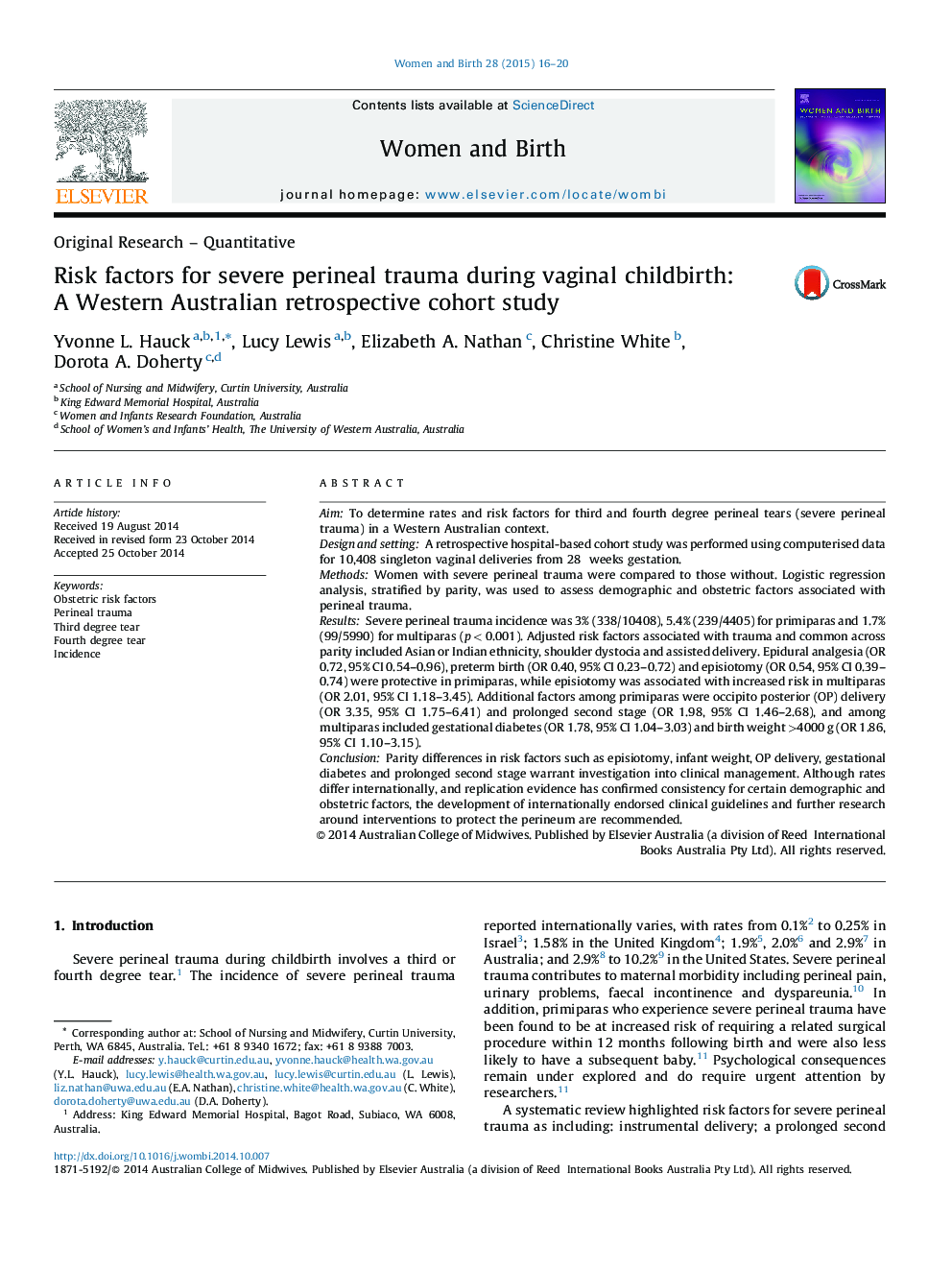| Article ID | Journal | Published Year | Pages | File Type |
|---|---|---|---|---|
| 2635906 | Women and Birth | 2015 | 5 Pages |
AimTo determine rates and risk factors for third and fourth degree perineal tears (severe perineal trauma) in a Western Australian context.Design and settingA retrospective hospital-based cohort study was performed using computerised data for 10,408 singleton vaginal deliveries from 28 weeks gestation.MethodsWomen with severe perineal trauma were compared to those without. Logistic regression analysis, stratified by parity, was used to assess demographic and obstetric factors associated with perineal trauma.ResultsSevere perineal trauma incidence was 3% (338/10408), 5.4% (239/4405) for primiparas and 1.7% (99/5990) for multiparas (p < 0.001). Adjusted risk factors associated with trauma and common across parity included Asian or Indian ethnicity, shoulder dystocia and assisted delivery. Epidural analgesia (OR 0.72, 95% CI 0.54–0.96), preterm birth (OR 0.40, 95% CI 0.23–0.72) and episiotomy (OR 0.54, 95% CI 0.39–0.74) were protective in primiparas, while episiotomy was associated with increased risk in multiparas (OR 2.01, 95% CI 1.18–3.45). Additional factors among primiparas were occipito posterior (OP) delivery (OR 3.35, 95% CI 1.75–6.41) and prolonged second stage (OR 1.98, 95% CI 1.46–2.68), and among multiparas included gestational diabetes (OR 1.78, 95% CI 1.04–3.03) and birth weight >4000 g (OR 1.86, 95% CI 1.10–3.15).ConclusionParity differences in risk factors such as episiotomy, infant weight, OP delivery, gestational diabetes and prolonged second stage warrant investigation into clinical management. Although rates differ internationally, and replication evidence has confirmed consistency for certain demographic and obstetric factors, the development of internationally endorsed clinical guidelines and further research around interventions to protect the perineum are recommended.
